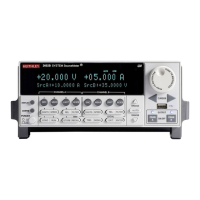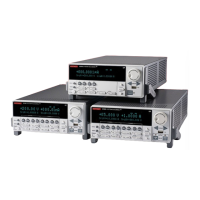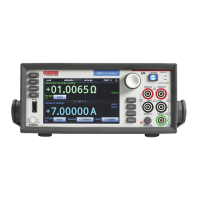Series 2600 System SourceMeters Reference Manual TSP Programming Fundamentals 2-43
Return to Section 2 topics 2600S-901-01 Rev. A / May 2006
Creating a user script
To create a script and load it, the test program (chunk) must be framed by the
following shell commands:
loadscript or loadandrunscript, and endscript.
Load only – The following scripts will load only into the run-time environment of
the Series 2600. The script on the left is unnamed, while the one on the right is
named (where
name is the user-defined name):
loadscript loadscript name
(chunk) (chunk)
endscript endscript
Load and run – The following scripts will load into the run-time environment and
then run. Keep in mind that when a script is run, only the chunk is executed. The
script on the left is unnamed, while the one on the right is named (where
name is
the user-defined name):
loadandrunscript loadandrunscript name
(chunk) (chunk)
endscript endscript
Details on loadscript and loadandrunscript are provided as follows:
loadscript
loadscript name
where: name is the user-assigned name for the script.
The loadscript shell command loads the script into the run-time environment.
The script can be assigned a name or it can be left nameless. If assigning a name
that already exists for another loaded script, the old script will be overwritten with
the new script.
If a script is not named when it is loaded into the run-time environment, it will be
lost when another script is loaded or when the Series 2600 is turned off. After
loading the unnamed script, use the
run()or script.run() command to run it.
A special name for a script is autoexec. After an autoexec script is saved in
non-volatile memory, the script will automatically run after the Series 2600 is
powered on and all autorun scripts have been executed. For details, see
“
Autoexec script” and “Autorun scripts” later in this section.
loadandrunscript
loadsandruncript name
where: name is the user-assigned name for the script.
These commands are similar to the loadscript commands except that the script
will execute (run) after it is loaded into the run-time environment. Also, the autorun
attribute for a named script will be set to “yes” (see “
myscript.autorun” later in this
section).

